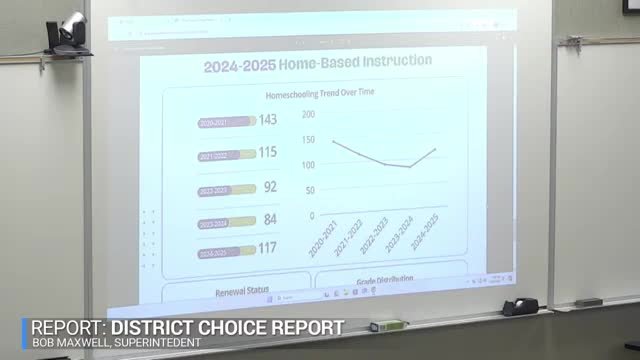Schools seek answers as students shift to online learning
October 09, 2024 | Pullman School District, School Districts, Washington
This article was created by AI summarizing key points discussed. AI makes mistakes, so for full details and context, please refer to the video of the full meeting. Please report any errors so we can fix them. Report an error »

In a recent government meeting, officials discussed the challenges and trends surrounding student enrollment in online education programs. A key observation highlighted was the frequent switching of online schools by elementary students, with many families opting for different programs each year. This trend raises questions about student satisfaction and the factors influencing these decisions.
Participants noted that while some students remain with the same online program through high school, younger students often jump between schools. This pattern suggests a need for further investigation into the reasons behind these transitions. One official pointed out that families sometimes choose online education due to travel commitments, such as sabbaticals, indicating that not all transitions are driven by dissatisfaction.
The discussion also touched on the importance of gathering qualitative data to better understand these enrollment patterns. Officials acknowledged that while surveys have been attempted to collect feedback from families, many parents do not complete them, leaving gaps in the data. Suggestions were made to enhance the survey process, including adding open-ended questions to capture more detailed responses about families' motivations for choosing online education.
The meeting underscored the competitive landscape between traditional schooling, homeschooling, and online programs, prompting officials to consider improved marketing strategies to retain students. The need for better data collection methods was emphasized as a crucial step in shaping future educational programming and addressing the needs of families.
Participants noted that while some students remain with the same online program through high school, younger students often jump between schools. This pattern suggests a need for further investigation into the reasons behind these transitions. One official pointed out that families sometimes choose online education due to travel commitments, such as sabbaticals, indicating that not all transitions are driven by dissatisfaction.
The discussion also touched on the importance of gathering qualitative data to better understand these enrollment patterns. Officials acknowledged that while surveys have been attempted to collect feedback from families, many parents do not complete them, leaving gaps in the data. Suggestions were made to enhance the survey process, including adding open-ended questions to capture more detailed responses about families' motivations for choosing online education.
The meeting underscored the competitive landscape between traditional schooling, homeschooling, and online programs, prompting officials to consider improved marketing strategies to retain students. The need for better data collection methods was emphasized as a crucial step in shaping future educational programming and addressing the needs of families.
View full meeting
This article is based on a recent meeting—watch the full video and explore the complete transcript for deeper insights into the discussion.
View full meeting
